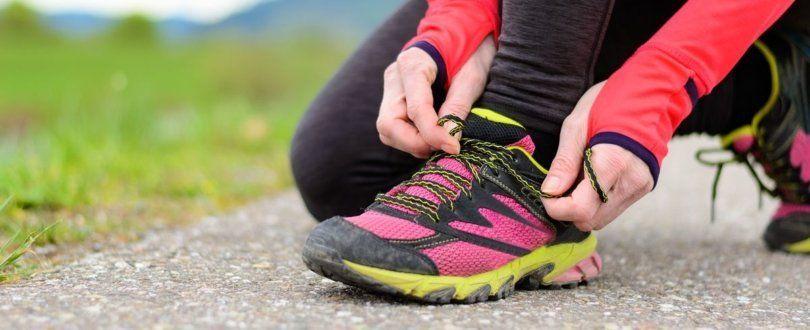
Forget looks, fashion and flashy commercials featuring elite athletes. Running Shoes Choosing a running shoe is the best investment a runner can make and it must be done with our needs in mind but also the type of our tread.
Words like underpronation or overpronation are probably unfamiliar to beginner runners who are taking their first steps into the magical world of running while many are unaware that there are different categories of running shoes.
Running shoes
In an effort to provide guidelines on how to choose the right athletic shoe, today we present all the useful information that a beginner runner or a more advanced runner who until now did not pay due attention to shoe selection criteria needs to know.
After all, a good pair of sports shoes that fits our needs will accompany us for hundreds of kilometers, protect us from injuries, offer us comfort and in general make our training sessions and matches a more fun experience.
Hypopronation (supine)
Before moving on to the basic categories of running shoes, we will start by describing exactly what underpronation or supination means, and what is the right type of shoe for these situations. Hypopronation is seen when the foot does not turn much.
The outside of the heel contacts the ground at a greater angle and there is little or no normal pronation, resulting in increased transmission of impact force through the lower part of the foot. In general, those who experience underpronation are likely to experience increased wear on the outer side of the heel of the shoe while the upper side of the shoe may be pushed outward.
Experts advise that it is best to choose a neutral running shoe with enhanced shock protection in these cases as runners who underpronate tend to experience impact-related injuries.
Overpronation
Overpronation is when the foot turns inwards to an excessive degree. Regarding the shoes of a runner who overpronates, they show extra wear on the inside of the heel and under the ball of the foot, especially the big toe.
The most appropriate shoes for these cases are those that offer sufficient support to the arch of the Stability category, reinforced Cushion type shoes (vibration absorption) or Motion Control for cases where the problem is greater.
Do a foot scan
The peltogram is divided into two categories. There is the static one where the patient stands motionless on the platform of the foot recorder and the data from the measurement is transferred to the computer. In addition to the static, there is also the dynamic, where the patient walks on the platform with a normal direction and speed as all the elements of the segmental gait are recorded.
Now several stores with sporting goods have a special machine that analyzes the athlete's movement while running and records the loads received by the foot. In this way, the person concerned learns the morphology of their sole and is given information so that they can choose the right running shoes that suit their needs.
The main categories of shoes
- Cushion: for runners with neutral running or supine,
- Stability/Motion Control: for runners with mild to moderate overpronation or with severe overpronation,
- Performance: low weight for fast training or races for runners with neutral running or supine,
- Racing: very low weight, exclusively for racing and high level athletes
- Trail: For those runners who run on trails and in mountainous terrain. Running shoes
Beware of the number and the experts
You've chosen the shoe that suits you and it's time to try it on. As you may have noticed, in the afternoon our soles are swollen compared to the morning. This is the right time to try on the shoes. Besides, don't forget that your soles swell when you run.
Regarding sizing, it would be good to forget the size you wear in everyday shoes, in your favorite boots or in a running shoe from a different company. The shoe should feel comfortable on your foot, and not constrict you.
For advice on which of the ones you've seen best suits your needs, put aside friends and scattered information on the internet. Choose to get the opinion of an expert, talk to him about your needs, your profile as a runner, the running terrain you do most of the time, and good … training.

No Comments